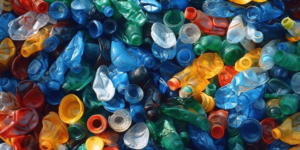Aluminum, that shiny, malleable metal, is everywhere around us. From soda cans to kitchen foil, its ubiquity makes it a prime candidate for recycling. Yet, how much can one expect when recycling this silvery-white metal?
The Current Scenario: Aluminum Recycling Rates
Currently, the rates for aluminum recycling per pound vary greatly based on various factors. Depending on the state and the purity of the aluminum, rates can differ. Did you know some states offer significantly more due to bottle deposit schemes?
Factors Influencing the Rates
- Geographic Location: Rates can fluctuate based on where you’re recycling your aluminum. States with active recycling incentives often provide a higher payout;
- Purity of Aluminum: Pure aluminum fetches a higher price than alloys. This is due to the ease of reprocessing pure aluminum;
- Market Demand: Like all commodities, the demand for aluminum affects its price. If there’s a surge in demand for aluminum products, recycling rates might spike.
Historical Trends: A Look Back
Over the past decade, aluminum recycling rates have seen a roller-coaster ride. During economic booms, demands for aluminum goods increased, and so did the recycling rate. However, during downturns, the opposite effect was evident.
Comparison with Other Metals
When it comes to recycling, aluminum isn’t the only game in town. Let’s see how it stands against other metals:
| Metal | Average Recycling Rate Per Pound (2022) |
|---|---|
| Aluminum | $0.50 |
| Copper | $2.50 |
| Steel | $0.10 |
| Brass | $1.45 |
It’s evident that while aluminum might not fetch as much as copper, it certainly stands tall when compared to steel.
Environmental Impact: Beyond the Buck
Recycling aluminum isn’t just about making a quick buck. It’s a small act that has a profound impact on the environment. Recycled aluminum requires 95% less energy than producing new aluminum. Imagine the carbon footprint you’re reducing with each pound recycled!
The Process of Aluminum Recycling
Ever wondered what happens to your soda can once it’s tossed into the recycle bin? Here’s a step-by-step breakdown:
- Collection: Aluminum goods are collected from various sources;
- Shredding: The aluminum products are shredded into smaller pieces;
- Cleaning: These shredded pieces undergo a cleaning process to remove impurities;
- Melting: Clean aluminum shreds are melted;
- Casting: Melted aluminum is cast into large blocks known as billets or into smaller molds;
- Rolling: These billets are then rolled out to produce new aluminum products.
Myths and Realities of Aluminum Recycling
Myth: Recycling aluminum degrades its quality. Reality: Aluminum can be recycled endlessly without any loss in quality.
Myth: It’s not worth recycling aluminum because of the low payout. Reality: Beyond the monetary value, the environmental benefits of recycling aluminum are immense.
Maximizing Your Aluminum Recycling Returns
Want to get the best bang for your buck? Here are some tips:
- Separate pure aluminum from alloys;
- Keep the aluminum clean and free of contaminants;
- Store and recycle in bulk;
- Keep an eye on market rates and trends.
The Evolution of Aluminum Recycling Rates
The Past Decade in Perspective
A retrospective look at the past ten years provides a vivid picture of the fluctuations in aluminum recycling rates. Notably, as global awareness of sustainable practices grew, so did the enthusiasm for recycling. This directly impacted the question on many minds: “how much is aluminum per pound for recycling?” Historically, rates have not been static. They’ve ebbed and flowed in response to macroeconomic factors, industrial demand, and even geopolitical events. However, as technology advanced and methods of recycling became more efficient, the rates began to see a more consistent upward trajectory.
Influence of Global Events on Rates
Major global events, from economic crises to large-scale industrial shifts, have a profound influence on recycling rates. For instance, during periods of economic growth, construction and manufacturing processes surge, leading to a higher demand for metals, including aluminum. This demand often correlates with an increase in the rates for aluminum recycling. On the other hand, during economic downturns, the rates might see a dip. Additionally, global initiatives promoting sustainable practices have a positive influence. When major world economies pledge to adopt greener processes, the recycling industry gets a boost, leading to a potential increase in the query: “how much is aluminum per pound for recycling?”

The Future of Aluminum Recycling
Predictive Analysis for Coming Years
With the rise of data science and predictive analytics, it’s becoming possible to forecast the potential rates of aluminum recycling. While predicting exact figures can be challenging due to the myriad of influencing factors, a general trend suggests a steady rise. This stems from the increasing global emphasis on sustainable practices and the ever-growing need for aluminum in various industries.
Potential Challenges and Roadblocks
While the future seems promising, it’s not devoid of challenges. Resource scarcity, geopolitical tensions, and technological disruptions can all play a role in determining “how much is aluminum per pound for recycling” in the coming years. It will be essential for industries and governments alike to remain adaptive and prioritize sustainable practices to ensure that the momentum of aluminum recycling doesn’t wane.
Remembering the significance of recycling, not just in terms of monetary value but its environmental and societal impact, will be crucial. As more individuals and industries realize the potential of aluminum recycling, it’s hoped that the rates will reflect its true worth.
Sustainability and Aluminum Recycling
The Green Revolution’s Ally
One cannot emphasize enough the role aluminum recycling plays in the global sustainability movement. The energy savings, when comparing recycled aluminum production to new aluminum extraction, are substantial. The process of bauxite mining, which is essential for new aluminum production, has considerable environmental impacts, including deforestation and habitat destruction.
The Carbon Footprint Impact
A critical aspect of sustainability is the reduction of carbon emissions. Here’s a snapshot of the carbon footprint reduction when recycling aluminum:
| Action | Carbon Footprint Reduction |
|---|---|
| Recycling one ton of aluminum | Equivalent to taking 5 cars off the road for a year |
| Recycling 1,000 aluminum cans | Saves up to 9 gallons of gasoline equivalent |
Recycling aluminum plays a pivotal role in reducing greenhouse gas emissions, making it an eco-champion.
Consumer Behavior and Aluminum Recycling
Awareness Leading to Action
The rising awareness among consumers regarding the environmental benefits of recycling has brought about a paradigm shift. Gone are the days when aluminum cans were mindlessly discarded. Today, an increasing number of consumers are pondering over “how much is aluminum per pound for recycling” and recognizing the broader eco-friendly implications of their actions.
The Recycling Habit
To understand the extent to which consumers have embraced aluminum recycling, let’s break down their habits:
- Collection: A significant number of households now have dedicated bins for recyclables;
- Participation in Programs: Many actively participate in community recycling programs, ensuring their aluminum waste finds its way to recycling centers;
- Brand Choices: Consumers are increasingly choosing brands that use recycled or recyclable materials, showcasing their preference for sustainable practices.

Innovations in Aluminum Recycling
Technological Breakthroughs
The world of aluminum recycling isn’t static; it’s dynamic and constantly evolving. Recent years have witnessed technological advancements that have made the recycling process even more efficient. Advanced sorting machines, for instance, can separate aluminum from other materials with a higher degree of accuracy, ensuring that a larger proportion of the metal is sent for recycling.
The Rise of the Smart Bins
One of the latest trends in the recycling realm is the introduction of smart bins. These bins are designed to:
- Sort Waste: They automatically segregate recyclable materials from non-recyclables;
- Notify Authorities: When full, these bins send notifications to the concerned authorities for timely disposal;
- Educate Users: Some even have screens displaying statistics, answering queries like “how much is aluminum per pound for recycling”, and showcasing the environmental impact of recycling.
Conclusion
While the rates for recycling aluminum per pound might be the initial draw, the environmental benefits are the real takeaway. In understanding the intricacies of aluminum recycling, one uncovers a world where every soda can makes a difference.
FAQs
The major factors include geographic location, purity of aluminum, and market demand.
Absolutely! Recycling aluminum saves 95% of the energy required to produce new aluminum.
Yes, aluminum retains its quality and can be recycled endlessly.
As of 2022, copper had the highest recycling rate per pound.
While not essential, separating them can fetch a higher rate for pure aluminum.








+ There are no comments
Add yours